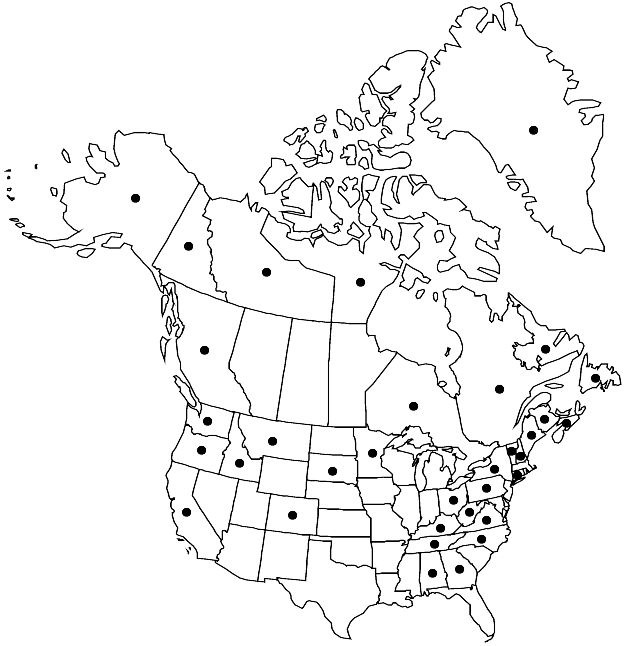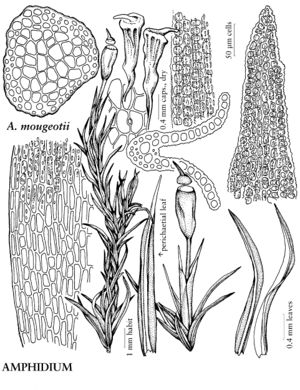Amphidium mougeotii
Coroll. Bryol. Eur., 40. 1856.
Plants 2–5 cm. Stem leaves linear-lanceolate, 1.5–3 mm; margins plane, entire; basal laminal cells yellowish, walls thick; distal cells 5–9 µm, slightly obscured by papillae, papillae elliptic, small. Sexual condition dioicous; perichaetial leaves elongate, narrow, base subsheathing, apex long-pointed. Seta 2.2–3.5 mm. Capsule barely exserted, 1–1.5 mm; operculum rostrate, greater than diam. of capsule. Spores 9–12 µm.
Habitat: Seasonally wet crevices of neutral to acidic cliffs
Elevation: low to moderate elevations
Distribution

Greenland, B.C., N.B., Nfld. and Labr., N.W.T., N.S., Nunavut, Ont., Que., Yukon, Ala., Alaska, Calif., Colo., Conn., Ga., Idaho, Ky., Maine, Minn., Mont., N.H., N.Y., N.C., Ohio, Oreg., Pa., S.Dak., Tenn., Vt., Va., Wash., W.Va., Europe, Asia.
Discussion
Amphidium mougeotii has linear, entire leaves and small laminal cells (5–9 µm). The cuticular papillae are numerous and elliptic, and only slightly obscure the distal cells, whereas in A. lapponicum they are larger, warty, and more noticeable.
Selected References
None.
